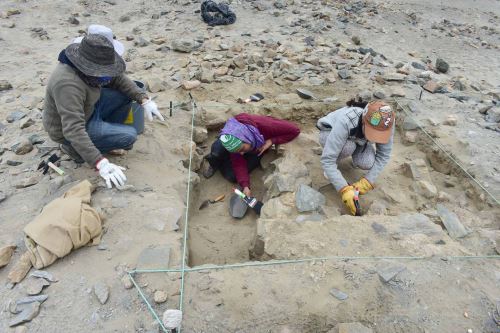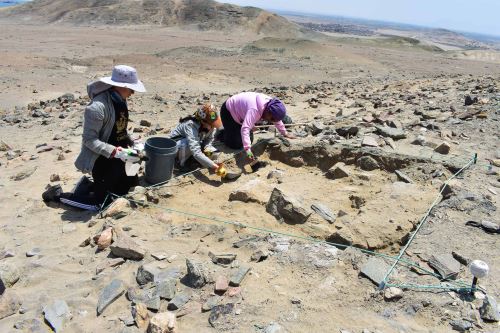03:00 | Chicama (La Libertad region), Aug. 3.
Research conducted at the Cerro Malabrigo archaeological site, located in Chicama Valley, La Libertad region, has revealed the existence of monumental architecture built in the initial Early Intermediate Period, between the 2nd century BC and the 1st century AD —long before the rise of the Moche culture.
This site is now recognized as a major landmark in Peruvian archaeology.
Andina News Agency spoke with Carito Tavera, researcher and co-director of the Chicama Archaeological Program and one of the authors of the article
"Cerro Malabrigo and the Emergence of Monumental Pre-Hispanic Architecture in the Chicama Valley, Northern Coast of Peru," published in the Boletín del Museo Chileno de Arte Precolombino.
The publication summarizes this important research, the result of a valuable international and intergenerational collaboration between the Chicama Archaeological Program at the National University of San Marcos and the University of South Florida.

A short-lived political and economic center
Tavera explains that research at Cerro Malabrigo Archaeological Site has, for the first time, succeeded in accurately dating the monumental construction in Chicama Valley's northern sector.
Radiocarbon analysis indicates that Cerro Malabrigo was occupied between 176 and 50 BC—a surprisingly short period compared to other Andean civilizations.
"This dating is crucial, as it establishes that Malabrigo is pre-Moche, challenging earlier hypotheses that linked it to cultures such as Cupisnique or Chavin," she emphasized.
The architecture of Cerro Malabrigo, consisting of a series of three monumental plazas and approximately 120 storage units at the rear, suggests that the site served as a political and economic hub for coastal and agricultural populations in the valley.
"This is the first study to show us the exact moment when monumental spaces emerged, capable of bringing communities together," the San Marcos archaeologist explained.
A Landscape of cohesion and coercion
The strategic location of Cerro Malabrigo —at the foot of the cliff by Malabrigo Beach in Puerto Chicama, known for its world-class surf— is no coincidence.
From the site, there was visual control over the bay, allowing regulation of access to marine resources.
The presence of storage units containing evidence of marine resources (crabs, shrimp, fish, and toyo sharks) and agricultural goods (baskets with botanical products) supports the hypothesis that this monumental space functioned as a large marketplace or center of exchange.
Tavera states that the architecture reflects a "landscape of both cohesion and coercion," where ritual and monumentality served as means to consolidate the power of local elites.
The construction of a project of this magnitude required significant collaboration among the population —a clear sign of social cohesion— though the architecture may also have restricted access to certain resources, signaling coercion.

Unique construction techniques and an uncertain fate
The expert notes that Cerro Malabrigo stands out for its construction techniques, which involved the use of cut stone with mud mortar and the unusual presence of semi-spherical adobe bricks.
This architectural combination is highly local and specific to Malabrigo, having not been recorded at other contemporary settlements in the valley, which were mostly domestic villages. This suggests a unique architectural tradition for this coastal population.
Despite its magnificence, what intrigues researchers is that Malabrigo's monumental project declined within a relatively short period.
Although there is no clear evidence of a natural collapse, researchers suggest that the elite may have weakened or failed to maintain its political influence.
"This first large-scale political and social experiment gave way to a void of monumentality in the valley, until the emergence of the Moche centuries later," she asserted.
New stage of research in Chicama
This year, the Chicama Archaeological Program is continuing its research along the coast.
The team is currently excavating at Puemape, another Formative Period temple located in Chicama Valley, with the aim of understanding Andean technologies and how coastal populations adapted and developed in these areas.
Excavations will soon also take place at Licapa II, a Moche site.
The story of Cerro Malabrigo —a coastal civilization with its own distinct identity and architecture— stands as a testament to the diversity and complexity of pre-Hispanic political organizations in Peru.
Its mysteries —such as the reason for its brief existence— have yet to be unraveled through future research, promising further revelations about this fascinating chapter of our ancestral history.

(END) MAO/MVB
Published: 8/3/2025